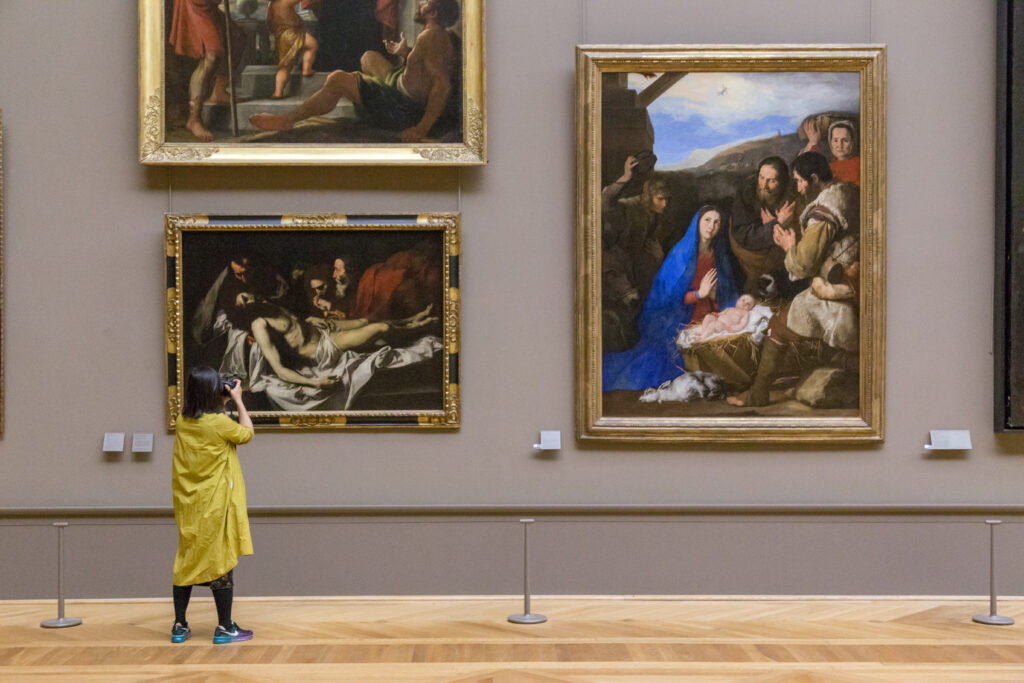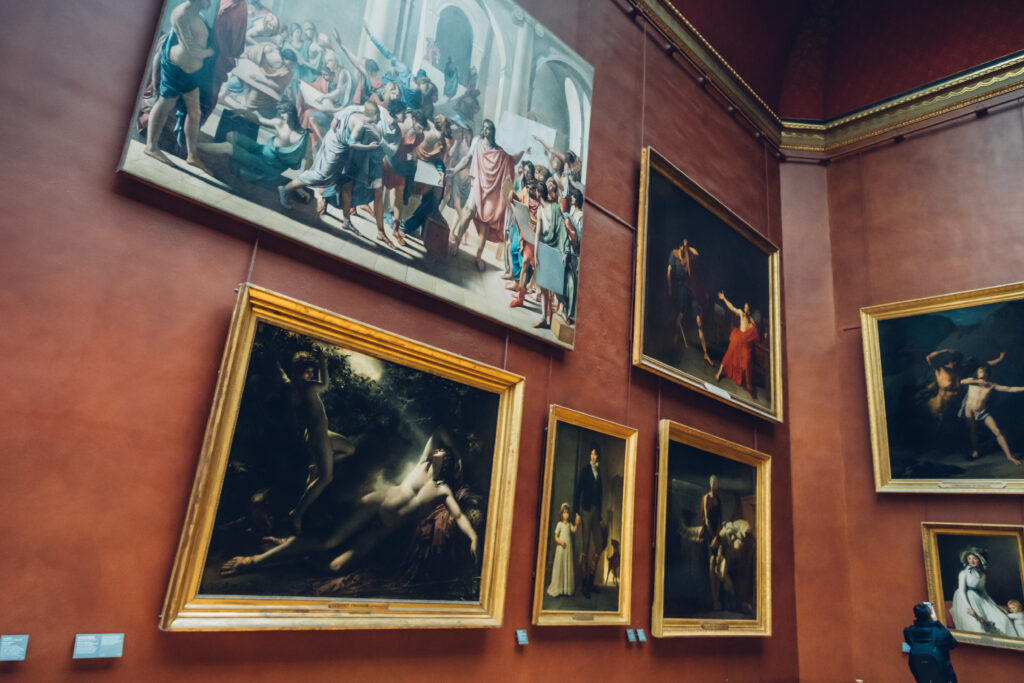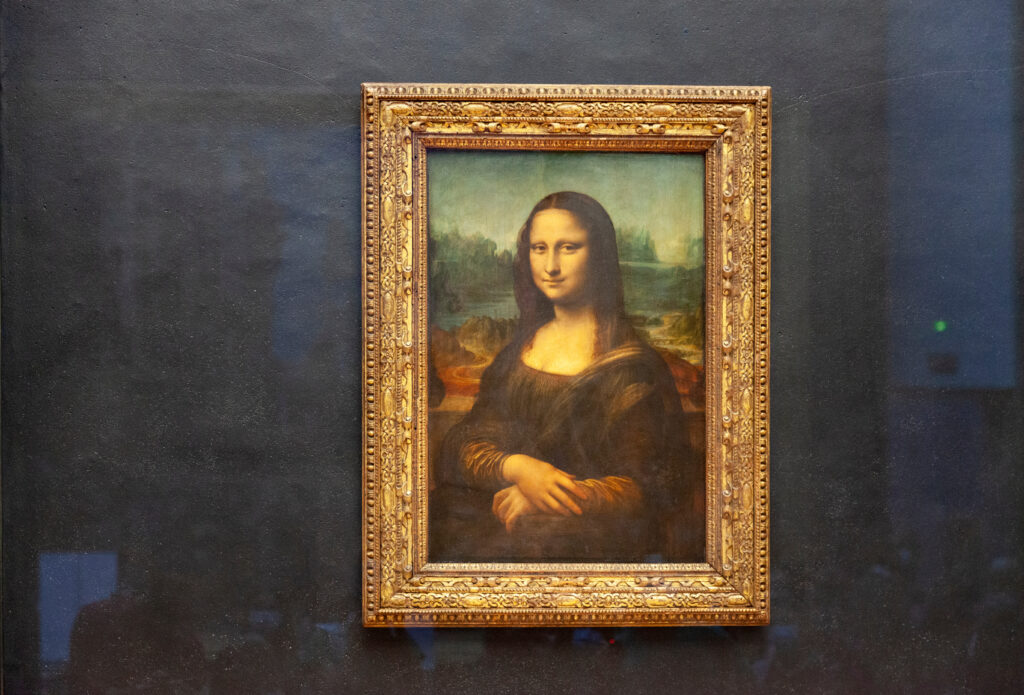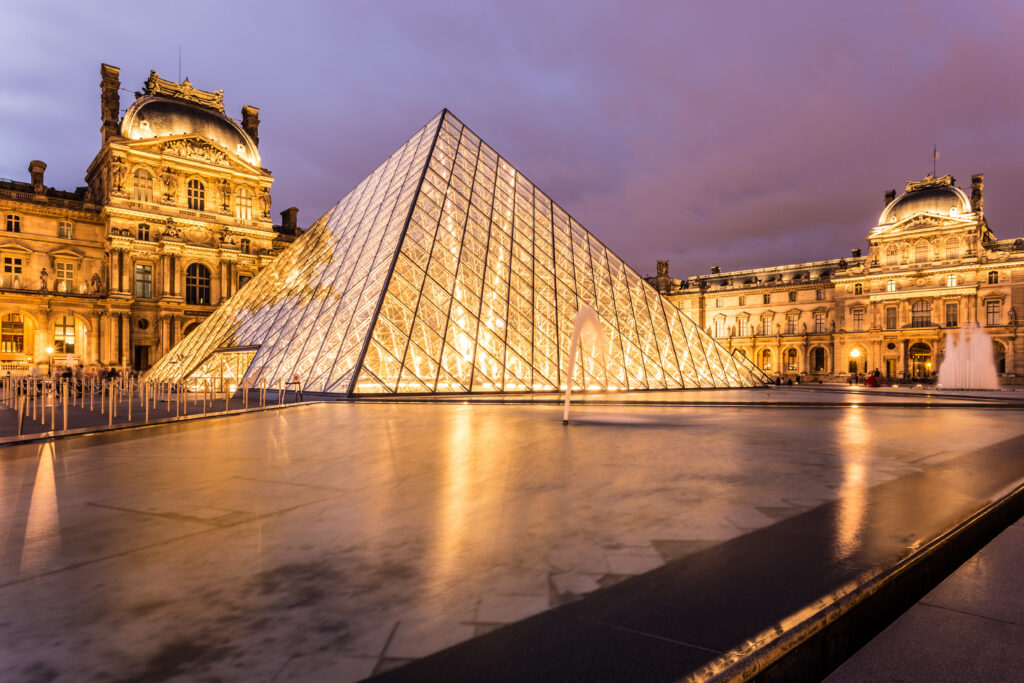
A visit to the Louvre is an experience you should have at least once in your life. It is the largest museum in the world, and certainly the most beautiful museum in Paris, if not France.
Without even mentioning the invaluable collections it houses, the Louvre as a building is already spectacular. For 500 years, it was the residence of the Kings of France. In 1989, it was adorned with the famous glass pyramid in the Cour Napoléon.
The Musée du Louvre fully deserves its place among the must-sees of Paris, so much so that it is the most visited museum in the world.
What to see and do at the Louvre?

The Louvre covers an area of 75,000m2, housing 500,000 works, of which 36,000 are on display. So don't expect to visit everything in an afternoon, as you would with any other museum. To visit the Louvre, you'll need to concentrate on one or more areas.
In fact, the museum is organized into eight different departments:
- Paintings,
- Egyptian antiquities,
- Greco-Roman Antiquities,
- Oriental Antiquities,
- Sculptures,
- Works of art,
- Islamic arts,
- Graphic Arts.
These departments are divided between the three wings of the palace: the Denon wing, the Sully wing and the Richelieu wing. Each wing houses its own rooms, which are numbered to help you find your way around. The wings are organized as follows.
The Denon wing houses :
- Arts of Islam,
- Mediterranean East in the Roman Empire
- Italian and Spanish paintings and sculptures
- 19th-century French painting,
- English painting,
- Northern European sculpture
- Art from Africa, Asia, Oceania and the Americas.
The Sully wing houses :
- French painting, drawings and objets d'art from the 17th to the 19th centuries,
- Roman, Greek and Egyptian antiquities,
- Works from the Middle East,
- The Medieval Louvre.
Finally, the Richelieu wing houses :
- French painting from the 14th to 17th centuries,
- German, Flemish, Dutch and Nordic paintings,
- Medieval art objects,
- Renaissance works,
- Napoleon III's apartments,
- French sculpture,
- Works from Mesopotamia.
To visit the Louvre, we recommend you consult the different movements and periods, and prioritize the areas that appeal to you, or adapt your choices depending on whether you're visiting with friends, as a couple or with children.
A very popular itinerary, which allows you to visit the Louvre and see its most popular masterpieces, is also available. To do this, take a map of the museum and follow the itinerary below:
- Enter through the Sully wing,
- Head for room 345 to admire the Venus de Milo,
- Take the staircase to room 703 and admire the Victory of Samothrace,
- Nearby, in room 706, admire Italian works, notably by Botticelli,
- The treasures of the Italian Renaissance continue on to the main gallery in room 710,
- At the far end, on the right, you'll see the Mona Lisa in room 711,
- Go down one floor to room 403, the gallery dedicated to sculptures by Michelangelo.
Must-see works at the Musée du Louvre

The Musée du Louvre is a must-see in Paris. But it too has its own must-sees!
Here are the top 10 must-see works when visiting the Louvre:
- Mona Lisa (room 711 - Denon wing): real name the Portrait of Mona Lisa, created in the early 1500s by Leonardo da Vinci, this is the museum's most famous work, and certainly one of the best-known in the world. Some visitors are surprised by its small size, so it's important to remember that it measures just 77 x 53 cm.
- The Venus de Milo (room 346 - Sully wing): there's nothing more romantic than seeing the goddess of love in Paris, the city of love ! This sculpture of the goddess Aphrodite is incomplete, lacking the arms, which has raised many questions among art historians.
- La Victoire de Samothrace (room 703 - Daru staircase): this other ancient Greek statue, this time representing the goddess Niké, is also missing limbs. The sculpture lacks both head and arms.
- Winged androcephalic bull (room 229 - Richelieu wing) : representing a god of Mesopotamian mythology.
- Le Sacre de l'Empereur Napoléon (room 702 - Denon wing): painted between 1805 and 1807 by Jacques-Louis David, this nearly 6 m x 10 m canvas depicts the coronation of Emperor Napoleon in the church of Notre-Dame in Paris.
- Le Scribe Accroupi (room 635 - Sully wing): this famous Egyptian statue depicts a scribe seated cross-legged. It was found in an ancient necropolis.
- The Marriage at Cana (room 711 - Denon wing): this 1563 painting by Paul Veronese stands proudly opposite Mona Lisa, so much so that most visitors miss it, even though it is a masterpiece. It depicts the miracle of Christ transforming water into wine, set against the backdrop of a Venetian aristocratic celebration.
- The Sphinx of Tanis (room 338 - Sully wing): this great Egyptian sphinx dates back to 2600 BC!
- La Vierge aux Rochers (room 710 - Denon wing): another masterpiece by Leonardo da Vinci, this time dating from 1486.
- The portrait of Louis XIV in coronation costume (room 602 - Sully wing): painted by Hyacinthe Rigaud in 1701, this is the most famous portrait of the Sun King.
Please note that due to exceptional loans, some works may not be available during your visit.
What are the different options for visiting the Louvre?

You have three options for visiting the Louvre:
- Admission: this gives you free access to the works in both permanent and temporary exhibitions. Click here to reserve your ticket!
- Admission with audioguide: for a better understanding of the works, and at a slightly higher price. You can book it here.
- Guided tours: the museum offers a variety of guided tours on different themes, whether it's the must-sees, a historical period, or a theme such as food in art. We recommend you book this guided tour of the must-sees at the Musée du Louvre, especially if you're short of time or a first-time visitor. External agencies also offer guided tours.
In any case, we strongly recommend that you buy your tickets online, on the Louvre's website, as on-the-spot purchase may not be available in case of heavy crowds. Paris is one of the most beautiful cities in the world, and therefore one of the most visited, so the museum is very busy!
Practical information you need to know before visiting the Louvre
Visit the Louvre with all the facts at your fingertips, by taking a look at the following practical information.
How long does it take to visit the Louvre?
You can spend as little as 2 hours if you don 't have much time in Paris, as you can spend a whole day, or even visit the Louvre over several days if you're an art enthusiast, or simply to take shelter in case it rains in Paris. In any case, you'll always have new, magnificent works to see.
In general, we recommend that you spend at least 3 hours in the museum. Count on 2 hours if you're with your family.
What are the opening hours of the Louvre?
The Musée du Louvre is open every day except Tuesday. It is open from 9 am to 6 pm, and on Fridays until 9:45 pm. Last admission is 1 hour before closing time. The museum is closed on January 1, May 1 and December 25.
If you're planning a family trip to Paris and the weather isn't on your side, take a look at our article on the best things to do in Paris with children when it's raining.


